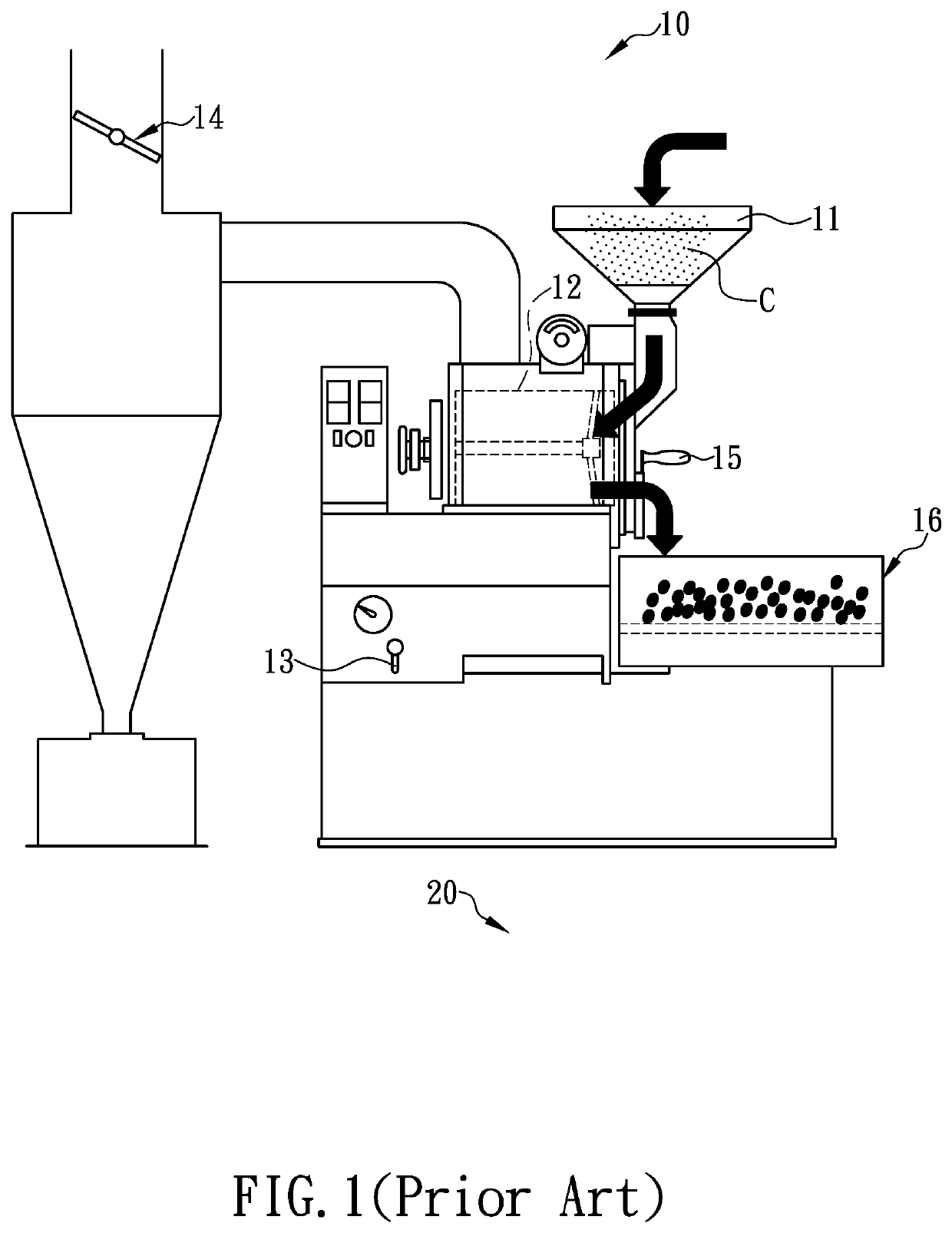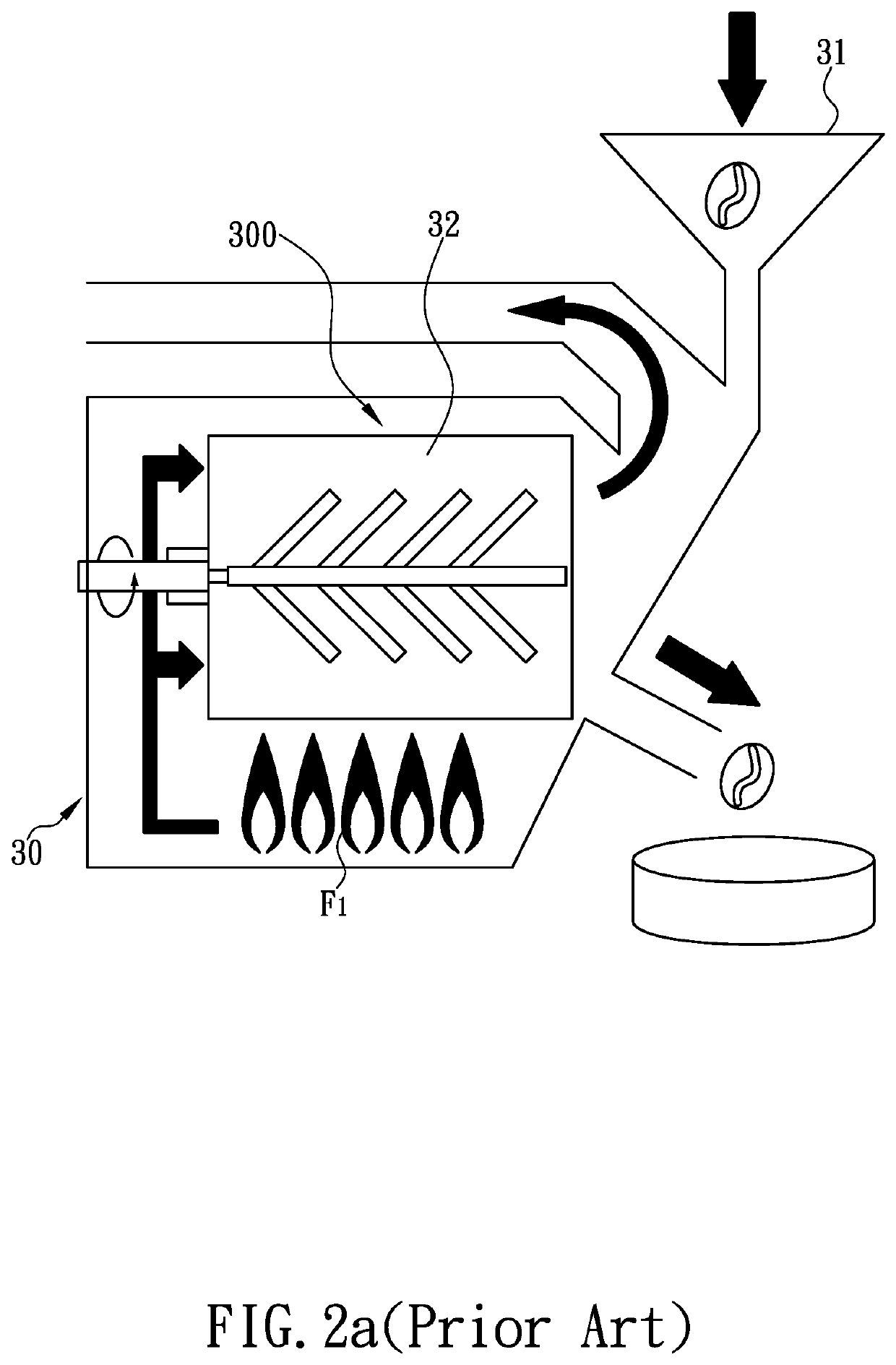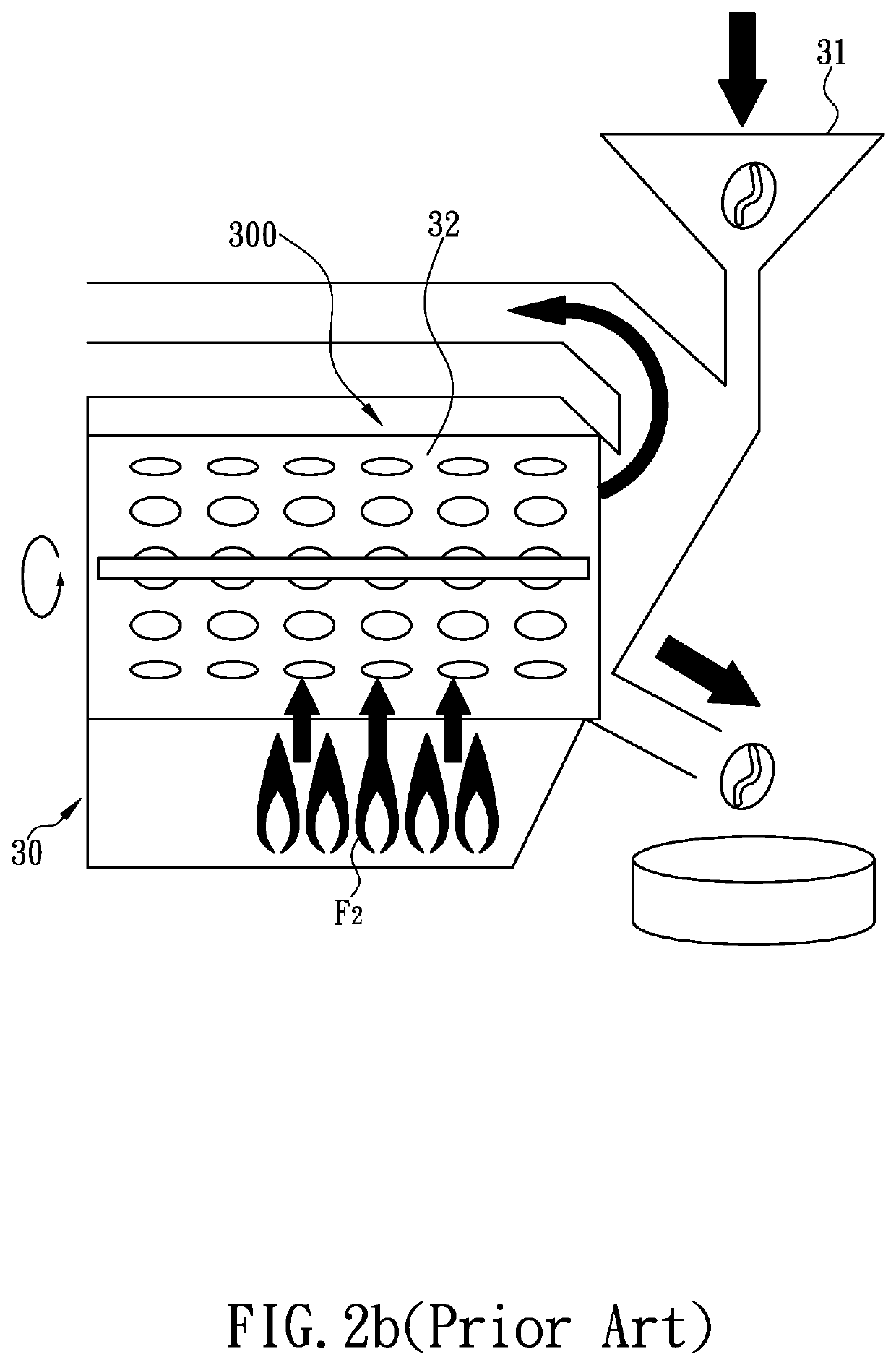Heat-transforming ceramic roasting cylinder and coffee bean roaster using the same
a ceramic and roasting cylinder technology, applied in the field of roasting cylinders, can solve the problems of compromising the flavor of the resulting coffee, affecting the roasting process, and roasted coffee beans are often heated unevenly, so as to reduce the van der waals force, save time and energy, and smell strong
- Summary
- Abstract
- Description
- Claims
- Application Information
AI Technical Summary
Benefits of technology
Problems solved by technology
Method used
Image
Examples
Embodiment Construction
[0029]Seeds for human consumption (e.g., soybeans, ginkgo seeds, coffee beans, cocoa beans, peanuts, almonds, and various other nuts) contain oils whose molecule clusters tend to gather together because of the van der Waals forces therebetween, foaming relatively large oil molecule clusters. These relatively large oil molecule clusters not only may harbor contaminants and impurities, but also result in a reduced heat-absorbing area, preventing the seeds from being heated evenly. That is to say, heat is likely to accumulate in a specific portion of a heated seed rather than permeate the entire seed. In particular, while such seeds are being roasted, it is difficult for the relatively large oil molecule clusters to seep evenly to those areas of the seeds that are adjacent to the seed surface; consequently, oil is concentrated in certain parts of the roasted seeds, creating an oily and less crunchy mouthfeel.
[0030]In view of the above, and based on his ample experience, professional kn...
PUM
| Property | Measurement | Unit |
|---|---|---|
| sizes | aaaaa | aaaaa |
| temperature | aaaaa | aaaaa |
| particle sizes | aaaaa | aaaaa |
Abstract
Description
Claims
Application Information
 Login to View More
Login to View More - R&D
- Intellectual Property
- Life Sciences
- Materials
- Tech Scout
- Unparalleled Data Quality
- Higher Quality Content
- 60% Fewer Hallucinations
Browse by: Latest US Patents, China's latest patents, Technical Efficacy Thesaurus, Application Domain, Technology Topic, Popular Technical Reports.
© 2025 PatSnap. All rights reserved.Legal|Privacy policy|Modern Slavery Act Transparency Statement|Sitemap|About US| Contact US: help@patsnap.com



